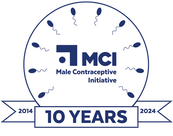|
The recent news coming out of India is cause for excitement amongst those interested in male contraception. Dr. Sujoy Guha and the rest of the RISUG team reported completing clinical trials in humans on the subcontinent, paving the way for access to the long-acting male contraceptive in India. News reports are saying that RISUG is now just waiting on final approvals from the Indian government, and that production could begin in as little as 6-7 months. On paper, these advancements are incredible. RISUG would become the first new method of male contraception since the advent of the vasectomy. Needless to say, it would be a proverbial game-changer, paving the way for even more methods to hit markets in countries around the world. For those in the male contraception research and development community, this ultimate goal of a menu of options would mean the realization of a shared collective dream and validation of decades of effort and millions of dollars of investment.
There is a real risk, though, when it comes to discussing potential or perceived progress in our field. Search “male contraceptives” on Google News and you’re often likely to find at least a few misleading articles. Such is the case this week with news about RISUG, with articles screaming out headlines like, “Indian researchers say male contraceptive injections are six months away from consumer use”, “Male Contraception Could Be Available In 2020 – At last!”, “World’s first MALE birth control could be just six months away”, “World’s first male contraceptive injection could be available in six months”, and “First male birth control injection almost ready for penises”. When the lede is misleading, it can create false hope and unreasonable expectations with respect to market availability or product characteristics of new male methods. The last headline is particularly egregious, given that the injection does not, in fact, go into a penis. As we shared in our blog post “Male Birth Control: Where Is It?”, the timelines for getting a new drug or product to market are not rigidly defined. There are many moving pieces that come along with identifying a potential intervention, and then proving its efficacy and safety. If you’re able to do so, you then have the realities of taking it to market to contend with: mass production, marketing, distribution, regulatory compliance, etc. The unfortunate truth that many people do not understand, and many news agencies do not report, is that it could take years before a product is approved for use and available at your local pharmacy. This disconnect between what is reported and what actually transpires is dangerous for many reasons, including:
Our vision is to arrive at a level of parity when it comes to method mix so that couples are empowered with the resources they need to make the best decision(s) regarding family planning. This vision guides our mission each day, particularly with respect to our advocacy efforts. We celebrate Dr. Guha and his team’s accomplishments along with the rest of the world, but we feel compelled to also defend them by countering the false narrative that people should expect his, or any other male contraceptive product, in the coming months. Pushing this narrative is irresponsible and unnecessary. We will have new methods of male contraception on the market in the future. It’s just not as near a future as some news organizations would like you to believe. While work continues and we wait for more information on the progress with RISUG and other methods in development, there’s much that you can do to help accelerate things including:
0 Comments
Your comment will be posted after it is approved.
Leave a Reply. |
Categories
All
Archives
June 2024
|
|
|
Donate to Male Contraceptive InitiativeYour generous donation makes a difference!
|
© Male Contraceptive Initiative. All rights reserved.


 RSS Feed
RSS Feed
